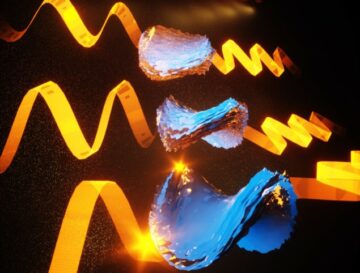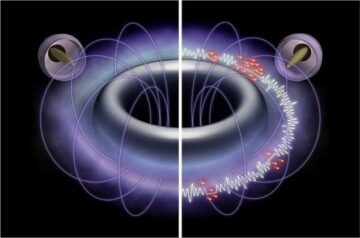James McKenzie explains what we can learn from electric-vehicle manufacturer Nikola Corporation, which is finally coming good despite its founder being jailed

Nikola Corporation is a US electric-vehicle company that once – briefly – had a market capitalization even greater than that of Ford. It was founded in 2014 by Trevor Milton, who served as chief executive and then executive chairman when the company went public in 2020. In December 2023, however, Milton was jailed for four years after being found guilty on three counts of criminal fraud for lying about “nearly all aspects of the business”, as US federal investigators put it.
Milton’s firm had also been slammed for excessive hype and fake promotional videos – one of which showed its prototype hydrogen-powered lorry rolling downhill rather than moving under its own power. Given the scandal and the jailing of the owner, you might think it would be impossible for Nikola to survive. However, the company is bouncing back.
With new management in place, Nikola is now on a genuine path to produce trucks powered by electric batteries and hydrogen fuel cells. In May the California-based logistics company Ailo placed an order for 100 of Nikola’s hydrogen fuel-cell electric trucks. Deliveries are scheduled for 2025, marking a remarkable phoenix-like transformation for Nikola.
It’s a fascinating story with one overarching theme: if there is a strong enough demand for a company’s products, investors will continue to invest despite any hurdles standing in the way. Of course, all hi-tech businesses have their ups and downs. But Milton hid the firm’s fraudulent activities – first when it was a private company with large and seemingly distant investors and then when it was publicly listed, where it was easier to keep things secret.
How it all began
Milton, now 42, founded Nikola in Salt Lake City in 2015, naming it in honour of the scientist and inventor Nikola Tesla. The choice was obviously a nod to the already well established electric-car company Tesla – nothing wrong with a bit of imitation of course. Milton himself had already been a successful entrepreneur, previously starting, running and exiting several companies.
Milton was good at articulating his vision and raising capital for Nikola. In 2015 Worthington Industries – a company that Milton had sold a previous gas-storage business to – invested $2m in Nikola. Worthington had its own high-pressure gas-storage products and presumably wanted to be involved in a new market for storing hydrogen.

Here’s why Tesla’s Master Plan 3 makes a lot of sense for a sustainable future
Then, between 2016 and 2020, Nikola Motors presented several vehicle concepts. The most notable of these was Nikola One – a heavy-goods vehicle with an electric motor running on a gas-powered generator. The company boasted of it having a large battery and a regenerative braking system and claimed the truck could go for almost 1200 miles on a single gas fill up.
The marketing was fantastic, with amazing renders, great press reviews and bold claims that the vehicle had half the fuel costs of a diesel truck. It all looked very convincing – there were even online “payback calculators” where customers could work out when they’d start saving money compared to buying a conventional vehicle.
In June 2016 – six months before the vehicle was due to hit the market – Nikola said it had received more than 7000 pre-launch reservations worth $2.3bn in just a single month. The company claimed to be 10–15 years ahead of its competitors – not bad for a business that was then just two years old. It all looked too good to be true.
Of course, all start-ups need to market themselves and their products by drawing up concepts, visions and technology roadmaps. Yes, you’ll need to sprinkle a bit of fairy dust, but you have to be crystal clear to investors and customers about what’s required to develop the technology or product prototypes. You’ll also have to be sure how much money from investors you’ll need.
As anyone who’s worked in a product or engineering environment will probably know, things are usually more complex and take longer to achieve than envisaged. So that’s the challenge for people of integrity: how do you manage those conflicting aims with investors, customers and staff? Because if you don’t have strong grip on what’s going on, at some point reality and hype collide. And when that happens, there’s only one winner.
Rolling forwards
By August 2016, the Nikola One concept vehicle had morphed from being gas-powered to running on a hydrogen fuel cell. In November of that year, the firm claimed pre-orders had risen to over $3bn, while at a launch event the following month, Nikola said it would start shipping its first trucks within three or four years. It also claimed three further vehicle concepts were in the works.
At that December 2016 launch event, Milton stressed that the Nikola One was “not a pusher” but “a fully working prototype”. It seemed an odd thing for him to say several times especially as many onlookers spotted an electrical cable under the stage, emerging next to the vehicle’s rear wheel. But Milton’s showmanship and charisma wowed the crowd and the company rolled forward.
Nikola even said it had earmarked locations for more than 350 US-wide hydrogen filling stations, which would start being built in 2019. It also agreed to give free hydrogen fuel for the first million miles driven by Nikola customers. Overall, Milton raised several hundreds of millions of dollars of investment from private backers as well as a $1.7m grant from the US Department of Energy.
Milton seemed to be living the life of a successful and visionary chief executive. He bought a 2670-acre ranch in Utah for $32.5m – a record-breaking amount for the state – and acquired 389 acres of land in Arizona for a factory. He even launched a law suit against Tesla, in which he sought $2bn in damages after alleging that the Tesla Semi lorry had infringed six design patents. (Tesla said the claims were baseless and the case was dropped in 2022.)
Milton also oversaw the design of new models, notably the Badger fuel-cell pickup truck. When it was unveiled in February 2020, the company said it had a range of 900 km and could go from zero to 60 miles per hour in under three seconds. Nikola even said the fuel cell could produce drinking water. The renders and design were excellent and in June 2020, the firm claimed it had already received $10bn worth of pre-launch orders.
In the same month, Nikola Motors merged with VectoIQ Acquisition Corporation – a publicly traded special-purpose acquisition company (SPAC) – to form Nikola Corporation, listed on the NASDAQ stock exchange. Three months later, it announced a $2bn deal that gave the US car giant GM an 11% stake in Nikola to supply battery and fuel cell technologies as well as produce the Badger.
Downward spiral
It was then that things started going wrong. On 10 September 2020, financial investigators Hindenburg Research published a report called “Nikola: How to Parlay An Ocean of Lies Into a Partnership With the Largest Auto OEM in America”. It claimed, among other things, that Milton had made false statements over the course of a decade to create a $20bn public company and make himself rich way ahead of delivering on promises to shareholders. It was also Hindenburg that said the Nikola One video was a fake.
Days later, GM pulled out of the deal, scaling back its involvement. BP backed away from a partnership to develop hydrogen fuelling stations, Milton resigned as executive chairman, and the company’s share price collapsed. The Department of Justice investigated and Milton was charged and later found guilty in October 2022. Milton was fined $1m and sentenced to four years in jail.

Calling all physicists: why you’re vital for the green economy
Prosecutors had urged the judge to sentence Milton to 11 years in prison to mirror the that handed down Theranos founder Elizabeth Holmes who was similarly found guilty of defrauding investors in her blood testing start-up. Milton, however, asked the judge to be sentence only to probation, claiming he was “not a very seasoned CEO”.
Defence lawyer Marc Mukasey said Milton’s communications were driven not by greed but by his “true belief” in the company, with Bloomberg News reporting Mukasey as saying: “It was not a nefarious attempt to take advantage of people.” Milton himself tried to paint his actions as heroic. “I obviously feel awful for all the resources and time this has caused everybody,” he told the court. “I don’t think you can feel human without feeling terrible for everyone involved. My intent was not to harm others.”
Speaking personally, I have limited sympathy for someone who obviously made this much stuff up.
Rising force
The aftermath of Milton’s jailing took its toll on the company. It is now on its third chief executive after Milton, the current boss being Stephen Girsky, who led the SPAC. In October 2023 Nikola won $165m from Milton – enough to cover the $125m fine the company received from the Securities and Exchange Commission. In March this year, Nikola then sued Milton and is after more as Milton still has about 20% of the shares of the company.
However, the company from Phoenix – seemingly like its namesake – is rising from the ashes. It is now delivering hydrogen fuel cell trucks to customers and has recently begun opening its commercial hydrogen fuel stations. It’s an amazing and inspirational turn round, all things considered. Although it’s still its early days in the electrification of transport. Nikola and its 900 employees are a company to watch.
- SEO Powered Content & PR Distribution. Get Amplified Today.
- PlatoData.Network Vertical Generative Ai. Empower Yourself. Access Here.
- PlatoAiStream. Web3 Intelligence. Knowledge Amplified. Access Here.
- PlatoESG. Carbon, CleanTech, Energy, Environment, Solar, Waste Management. Access Here.
- PlatoHealth. Biotech and Clinical Trials Intelligence. Access Here.
- Source: https://physicsworld.com/a/tech-phoenix-how-electric-vehicle-manufacturer-nikola-corporation-is-rising-from-the-ashes/
- :has
- :is
- :not
- :where
- $UP
- 10
- 11
- 135
- 160
- 2014
- 2015
- 2016
- 2019
- 2020
- 2023
- 2025
- 350
- 42
- 60
- 7000
- 90
- 900
- a
- About
- Achieve
- acquired
- acquisition
- acres
- actions
- activities
- ADvantage
- After
- aftermath
- against
- agreed
- ahead
- aims
- All
- almost
- already
- also
- amazing
- among
- amount
- an
- and
- announced
- any
- anyone
- appears
- ARE
- arizona
- AS
- asked
- aspects
- At
- attempt
- AUGUST
- auto
- away
- back
- backers
- Bad
- Badger
- batteries
- battery
- bbc
- BE
- because
- been
- before
- begun
- being
- between
- Bit
- blood
- Bloomberg
- bold
- BOSS
- BP
- briefly
- built
- business
- businesses
- but
- Buying
- by
- cable
- called
- CAN
- capital
- capitalization
- car
- case
- caused
- cell
- Cells
- chairman
- challenge
- charged
- chief
- Chief Executive
- choice
- City
- claimed
- claiming
- claims
- clear
- CO
- collapsed
- Collide
- coming
- commercial
- Communications
- Companies
- company
- Company’s
- compared
- competitors
- complex
- concept
- concepts
- Conflicting
- considered
- continue
- conventional
- convincing
- Corner
- CORPORATION
- Costs
- could
- counts
- course
- Court
- courtesy
- cover
- create
- Criminal
- crowd
- Crystal
- Current
- Customers
- Days
- deal
- decade
- December
- Deliveries
- delivering
- Demand
- Department
- Department of Energy
- department of justice
- Design
- Despite
- develop
- diesel
- Distant
- do
- dollars
- Dont
- down
- downs
- drawing
- driven
- dropped
- due
- Dust
- Early
- easier
- Electric
- electric motor
- electrification
- emerging
- employees
- energy
- Engineering
- enough
- Entrepreneur
- Environment
- especially
- established
- Even
- Event
- everybody
- everyone
- excellent
- excessive
- exchange
- executive
- Exiting
- Explains
- factory
- fake
- false
- fantastic
- fascinating
- February
- February 2020
- Federal
- feel
- feeling
- fill
- filling
- Finally
- financial
- fine
- Firm
- First
- following
- For
- Forbes
- Ford
- form
- Former
- Forward
- found
- Founded
- founder
- four
- fraudulent
- Free
- from
- FT
- Fuel
- fuel cells
- fully
- further
- GAS
- gave
- generator
- genuine
- giant
- Give
- given
- GM
- Go
- going
- good
- grant
- great
- greater
- Greed
- Green
- guilty
- had
- Half
- happens
- harm
- Have
- having
- he
- her
- hi-tech
- him
- himself
- his
- Hit
- honour
- hour
- How
- How To
- However
- HTML
- HTTPS
- human
- Hundreds
- hundreds of millions
- Hurdles
- hydrogen
- Hydrogen Fuel
- Hype
- i
- if
- impossible
- in
- information
- Inspirational
- integrity
- intent
- into
- Invest
- Investigators
- investment
- Investors
- involved
- involvement
- issue
- IT
- ITS
- jpg
- judge
- june
- just
- Justice
- Keep
- Know
- lake
- Land
- large
- largest
- later
- launch
- launched
- Law
- lawyer
- LEARN
- Led
- lies
- Life
- like
- Limited
- Listed
- living
- locations
- longer
- looked
- Lot
- made
- make
- MAKES
- manage
- management
- Manufacturer
- many
- March
- Market
- Market Capitalization
- Marketing
- marking
- master
- max-width
- May..
- might
- million
- millions
- Milton
- mirror
- models
- money
- Month
- months
- more
- most
- Motor
- Motors
- moving
- much
- my
- naming
- Nasdaq
- Need
- New
- New Market
- next
- notable
- notably
- nothing
- November
- now
- ocean
- october
- of
- Old
- on
- once
- ONE
- online
- only
- opening
- or
- order
- orders
- Other
- Others
- out
- over
- overall
- overarching
- own
- owner
- paint
- panels
- Partnership
- Patents
- path
- People
- per
- Personally
- phoenix
- Physics
- Physics World
- Pickup
- Place
- placed
- plan
- plato
- Plato Data Intelligence
- PlatoData
- Point
- power
- powered
- presented
- press
- previous
- previously
- price
- prison
- private
- PRNewswire
- probably
- produce
- Product
- Products
- promises
- promotional
- prototype
- prototypes
- public
- publicly
- publicly listed
- published
- put
- raised
- raising
- raising capital
- range
- rather
- Reality
- received
- recently
- regenerative
- remarkable
- renders
- report
- Reporting
- required
- Resources
- Reuters
- Reviews
- Rich
- Risen
- rising
- roadmaps
- Rolled
- round
- running
- s
- Said
- salt
- Salt Lake City
- same
- saving
- say
- saying
- scaling
- Scandal
- scheduled
- Scientist
- seasoned
- SEC
- seconds
- Secret
- Securities
- seemed
- seemingly
- sense
- sentence
- sentenced
- September
- served
- several
- Share
- Shareholders
- Shares
- Shipping
- showed
- Similarly
- single
- SIX
- Six months
- So
- solar
- solar panels
- sold
- some
- Someone
- SPAC
- Staff
- Stage
- stake
- standing
- start
- Start-up
- start-ups
- started
- Starting
- statements
- Stations
- Still
- stock
- Stock Exchange
- storing
- Story
- strong
- stuff
- successful
- sued
- Suit
- supply
- survive
- sustainable
- system
- Take
- tech
- Technologies
- Technology
- terrible
- Tesla
- Testing
- than
- that
- The
- their
- theme
- themselves
- then
- Theranos
- There.
- These
- thing
- things
- Think
- Third
- this
- this year
- those
- three
- thumbnail
- time
- times
- to
- told
- too
- took
- traded
- Transformation
- transport
- Trevor
- tried
- truck
- Trucks
- true
- TURN
- Turned
- two
- under
- unveiled
- UPS
- urged
- us
- usually
- vehicle
- very
- Video
- vision
- visionary
- visions
- vital
- wanted
- was
- Watch
- Water
- Way..
- we
- WELL
- went
- were
- What
- Wheel
- when
- which
- while
- WHO
- why
- Wikipedia
- will
- wind
- winner
- with
- within
- without
- Work
- work out
- worked
- working
- works
- world
- worth
- would
- Wrong
- WSJ
- year
- years
- yes
- you
- zephyrnet
- zero












